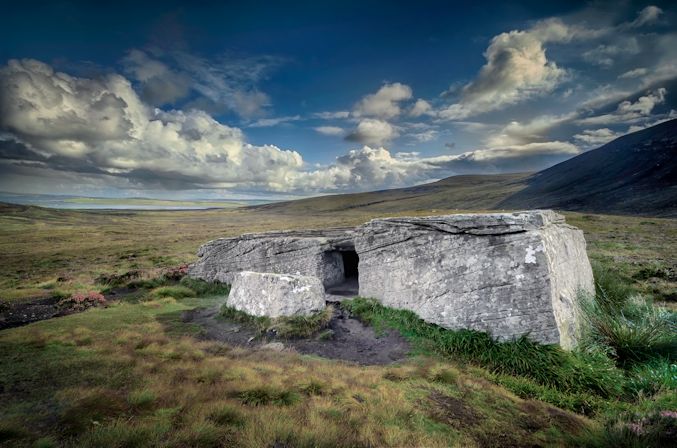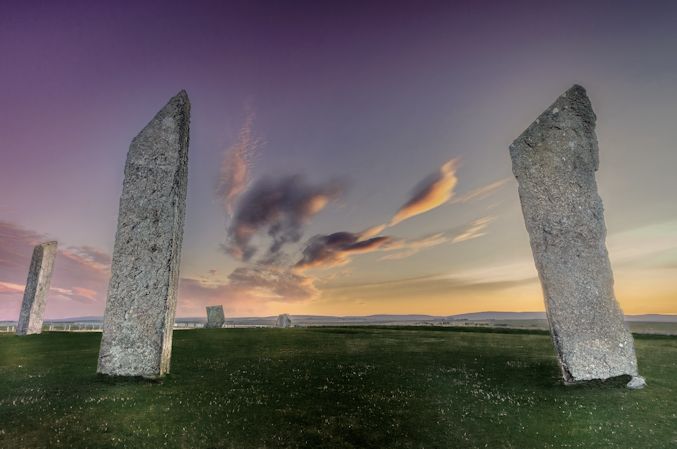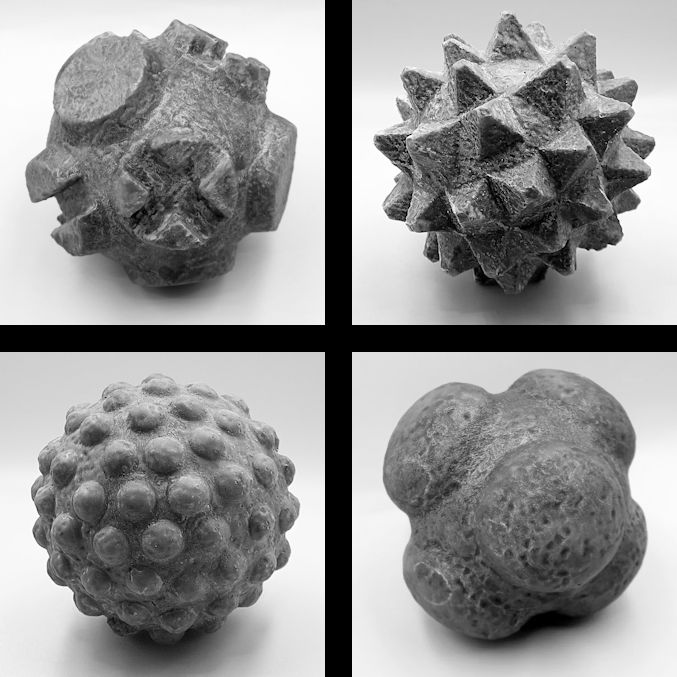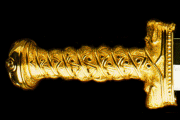The Mystery of Doggerland
Page 3 of 3
Mystery and Enigma

The Dwarfie Stane on Hoy Island of the Orkneys. This carved-out chambered tomb, around 6000 years old, may have been the burial place of settlers from Doggerland well before the Megalithic culture began on the British Isles. (Photography by Deborah Cartwright)
Legends of a Lost Land
Remarkably, this lost civilization that once existed in the North Sea, which seems to have given rise to the ancient stone-circle-building Megalithic culture of the British Isles, was remembered in the mythology of the later Celts. Centuries after the first Megalithic monuments were erected in Britain and Ireland, legends persisted concerning a sunken, prosperous land that once thrived north of Scotland. The oldest written records concerning Britain were made by Greek explorers at the time of Alexander the Great, around 325 BC. The native Britons of the time, the Iron Age Celts (who first arrived from mainland Europe around 700 BC), told them of a lost realm that once existed north of their country. It was said to have been an island paradise that sank beneath the waves when the inhabitants angered their sea gods. From here, the Celts maintained that the stone circle builders originated. Indeed, legends of a sunken land to the north of Britain still survived to be recorded by foreign visitors to the British Isles many centuries later, particularly in Ireland, where much ancient mythology was recorded by Christian missionaries who first arrived during the fifth century AD.

The Stones of Stenness. At 5,100 years old, it is the earliest known stone circle to survive on dry land anywhere in the British Isles. (Photography by Deborah Cartwright)
The Demise of Doggerland
So, how did this lost civilization end? Before northern Doggerland was flooded entirely, there were dreadful climatic changes. The remains of ancient vegetation excavated from the soil of Fair Isle suggest that there were prolonged periods of drought; irregular sandbanks deposited on the west of the island during the fifth century BC imply that there had been repeated extreme storms and hurricanes; and the carbon-dated remains of sea creatures deposited in the soil over 100 feet up hillsides imply that around 4000 BC global warming caused Doggerland to be hit by a mega-tsunami, thought to have been caused by the collapse of a vast glacier on the Norwegian archipelago of Svalbard.

How did the inhabitants of Doggerland develop such advanced Neolithic technology, medicine, ceramics, and building techniques unknown anywhere else in the world for centuries to come? Why did they build their giant stone circles, immense avenues of monoliths, and huge artificial hills that contained no chambers or burials within? And why did they create mysterious stone balls known as petrospheres? Hundreds of these tennis-ball-sized balls of rock, intricately carved with spikes, nobs, and engraved patterns, have been found at early Megalithic sites on Fair Isles, the Orkney Islands, and the extreme north of Scotland dating from the time of the first arrival of the culture from Doggerland over 5,000 years ago. In The Mystery of Doggerland, Graham addresses these and other mysteries of this lost land that could be described as the Atlantis of the North Sea.
Short film by Graham. Why the Megalithic civilization that built Stonehenge may have originated on the sunken island of North Doggerland.
Hundreds of carved petrospheres, around the size of tennis balls, some well over 5000 years old, have been found on Fair Isle, the Orkney Isles, and northern Scotland dating from Megalithic and pre-Megalithic times. Their purpose or significance remains a complete mystery.








